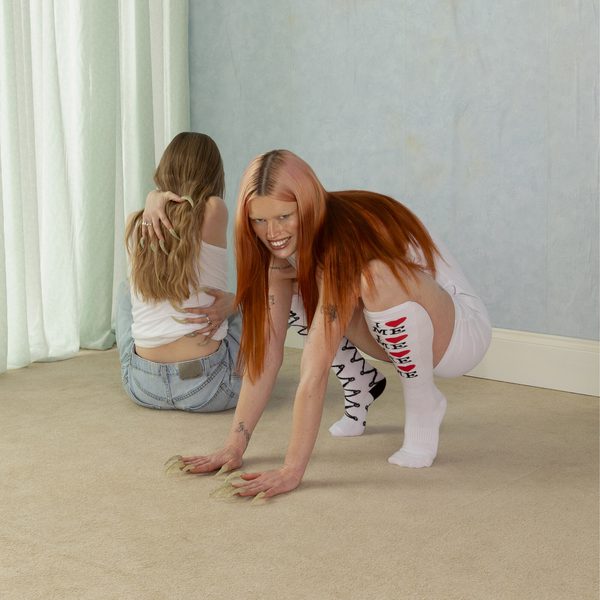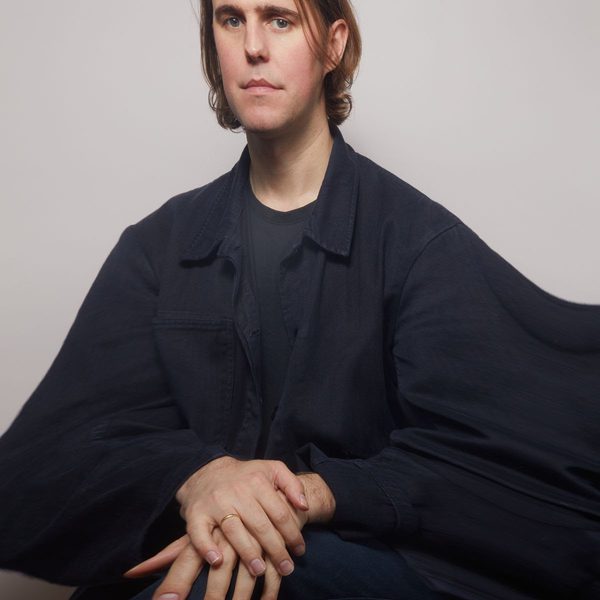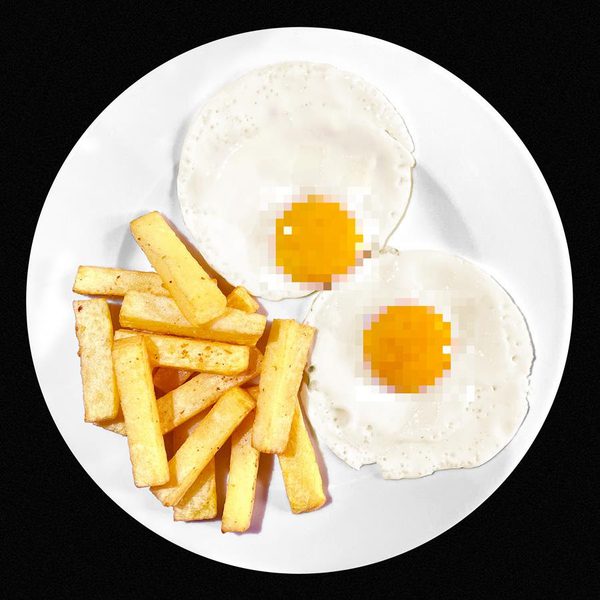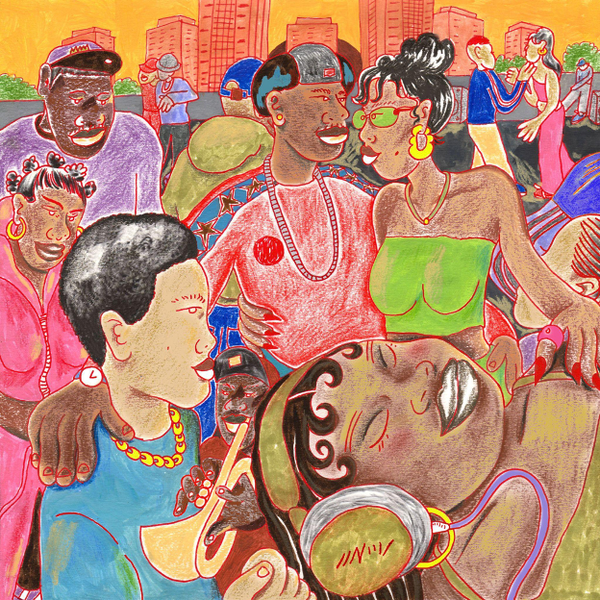
The multi-instrumentalist juggernaut tells Victoria Parkey how music that challenges and questions the formal constraints and constructs of genre has inspired his work.
“I really like these outer edges of genres. A genre has the core of the concept and the outer edges are where all the interesting stuff is happening, where it can cross into something else. I think that’s something a lot of these songs have in common.”
When Ólafur Arnalds released his latest album, some kind of peace, this November, plans had to change. The tour that was scheduled around it has shifted to next autumn but Arnalds sounds optimistic and adaptive about not following a standard release schedule. “I think it’s actually a really interesting way to release a record, because it forces us to look out of the box a little bit and stop doing things just because that’s how we are used to doing them.”
some kind of peace makes for a perfect Winter 2020 record - effervescent and otherworldly; cerebral, calm and beautiful. I have listened to it a lot whilst moping about the safety of my flat as the outside world started to feel increasingly daunting again, and it brought me a lot of welcome comfort. There’s no question why the record was met with open arms and enthusiastic, glowing reviews. It seemed to arrive at just the right time, as winter nights started to creep in earlier, lockdowns started to get stricter again and our immediate surroundings started to feel smaller and smaller.
Arnalds had already begun to work on the record when the first lockdowns began, but rather than that directly influencing the record, he says it “confirmed the direction I was already heading into. It was already a record that was fitting into these times. It was already a more intimate personal record and when all of this happened it felt like it reaffirmed that it was the right direction to head into. It didn’t change it so much, it just kept me on that path.”
His Nine Songs selections range broadly, from a Death Cab For Cutie deep cut, to Arvo Pärt’s hugely influential “Cantus In Memoriam Benjamin Britten”, which he feels paved the way for the formula of modern pop music composition, but they all share a likeness for toeing the line of the conventions of typical genre.
As Arnalds puts it, “These songs are kind of like a Spotify algorithm that is slowly trying to make you listen to classical music, it goes into crossover and then slowly more and more classical!”, flawlessly guiding you from Nina Simone to Henry Purcell in a way that somehow, makes perfect sense.
“Baltimore” by Nina Simone
“It’s a song for a time in my life where weirdly it was kind of the feel-good song of chill moments with friends. I was in a very cool period of my life where I was getting to know some amazing new people who became some of my best friends and I always go back to that song and listen to it be reminded of those times, but I also think it’s such an amazing piece of music when you start digging a bit deeper into it and read the lyrics.
“I didn’t find out until much later that it’s a song by Randy Newman and if you listen to his version it’s really quite amazing what Nina Simone did with it. I listen to this song pretty much every week, and there was a time I would listen to it every day in the mornings to wake up.”
“This Must Be The Place (Naïve Melody)" by Talking Heads
“This is just my number one song ever, so I had to put it in. I’m a huge Talking Heads fan and I’m a huge David Byrne fan. There are so many reasons for why I put “This Must Be The Place” in here, but mostly it’s just the best song I’ve ever heard. I think it’s this contrast of how jolly the song is and the heartbreak and longing in the lyrics of it.
“I have really looked up to David Byrne in particular for most of my music career, in terms of how he constantly pushes the boundaries of what it means to be a musician, of what live shows should be and what ideology of what music should be. Of course, I do very different music to him, but just that attitude to approaching your life in music has been such an inspiration to me.
“I didn’t get the pleasure of seeing David Byrne’s last tour with all the drummers, but I did see him on the tour with St Vincent, which was really amazing.”
“Africa” by D’Angelo
“Voodoo is the most played vinyl record in my house and all my friends know it because when they come to visit and we have a couple of drinks, that record is always on - it kind of became the soundtrack of my living room. It’s just a fantastic record isn’t it?
“Again, musically it’s a huge influence. It taught me a lot about what groove actually means. Every single musician on that record is the best in the world at what they do, so for my approach to percussion and drum programming or actually playing, this record has been a huge influence.
“D’Angelo’s story has always touched me, how this geeky boy became a sex icon - he never much cared for that - and just hid away in exile for 15 years until he made his next record. I think who you are is so much part of the output of the music and it’s part of the story. I’m not someone who really listens to lyrics, but I am always listening closely to the production or how the groove is working. I don’t hear the lyrics and I think this is perhaps compensating for that, I need to know who the person is, [and understand the context] about what is behind this energy in the song.”
“20th Century Towers” by Death Cab for Cutie
“They were a very influential band for me growing up, [I’ve been] a fan since I was a teenager. They are a band that followed me into my twenties. I was a big post-punk, emo kid and this particular EP has always been a favourite of mine. It’s quite melancholic. It’s probably the slowest, most dreadful stuff that they did, there’s a 15-minute song on there that is just a very slow, sad ballad. I just recently thought of this song and listened to it again for the first time in 10 years and I think it’s amazing.
“I really like Transatlanticism and their earlier records, after that when it was a little more pop, I still enjoyed it and still listened to it, but the records that really stayed with me were their more experimental early records. This Death Cab stuff has been a bit under the radar, and this is where they were most creative in their career, they were doing very original stuff that was very much coming out of the post-punk scene, rather than already in the pop scene. They were still kind of coming up from that background at this time and breaking the mould in interesting ways.
“I never got to see them until much later, when I was already touring myself and playing some festival and they were already in their phase that they’re in now. I remember feeling really sad because they played on a stage at the same festival I was playing - just after I played - so I went to the side of the stage and watched a couple of songs and I wished that this was five years earlier.
"I didn’t care as much, I was already jaded and touring the world and seeing a thousand of bands in one summer, I was like ‘Ugh just another band, I don’t need to watch this. I’m just going to go to my tour bus and go to sleep’ and after I was like, ‘No, wait, that was Death Cab! They were my childhood idols, why didn’t I go into the crowd!’ I wish I saw them when I was like, 22.”
“Bibo No Aozora” by Ryuichi Sakamoto
“He was definitely one of the first composers that I got into who is not a strictly classical composer. He’s very influential on my early work and this track in particular was something that I was really influenced by. I even have a hidden musical tribute in one of my tracks, which I know some people have spotted, but this track was so important to me that I purposely took a little bit from it and inserted it in one of mine, hidden in the background.
“I was very lucky to get to know Ryuichi in the last few years and I have found him to be one of the sweetest people I’ve ever met. I remember after getting to know him, I thought to myself ‘This is my goal in life, when I grow older and get to be his age I want be able to honestly say that I lived with as much kindness and generosity as this guy has.’ So he was not only a musical influence, but he became a very big personal influence.
“The first time he got in contact, I was in New York in a record store [doing a record signing], there was a line of people and I was just sitting and signing records and this young boy comes up to me, and he hands me a little gift and says “Hey, my father asked me to give you this. He is ill and wanted to come, but he sends his love to you” and I’m like “Oh, thank you” and I kept signing records. When I’m done I look at it and it’s a Ryuichi Sakamoto CD, signed from him saying “Sorry I couldn’t make it, I would love to meet you, please be in touch.” So he sent me a gift through his son - it was really wonderful.
“We spoke after that on email and he offered for me to open up for him on some of his shows in Europe and that’s when I first met him. His whole crew were so kind to me and really took good care of us.”
“Koyaanisqatsi” by Phillip Glass
“Phillip Glass was another early influence on me, and it’s also a fantastic film, Koyaanisqatsi. I got into it again recently during one of those semi-lockdown phases, when I was just hanging out at home and starting to watch these kinds of films again. I think one of Philip Glass’ best works is that soundtrack. It’s simplicity in the music and repetition, but amazing power combined with those strange choir voices. It’s just a fantastic piece of music.
“He’s someone I listened to a lot when I started to compose. When I was around 20 years old I was buying any Philip Glass CDs I could find, I would search the record stores for Philip Glass and study his works and try to analyse what was going on - ‘Why is this so beautiful? How can this be so simple but so beautiful at the same time?’ So I think that has been quite an influence on me."
“Your Young Voice” by King Creosote and Jon Hopkins
“A record that perhaps has been a little bit under the radar, although it was nominated for the Mercury Prize at the time when it was released. I think the story was that King Creosote approached Jon Hopkins to produce this record and Jon put so much of his sound and influence into it that it became a collaboration record.
“It’s a very interesting mixture of Jon Hopkins’ glitchy electronic sounds with very pure, quite traditional sounding Scottish folk music. It’s a great example of how genres don’t have to mean anything if we don’t want them to. There is no real barrier between electronica and Scottish folk music if we don’t want there to be a barrier between the two - we just take it away and we can totally combine those things.
“I think basically my whole career is about approaching music with that in mind - that there are no limitations except the ones we set ourselves. I tend to mix classical instruments with electronic music, but that’s not the limitations of it - if I want to do hip hop one day, I should be able to do hip hop, it’s just sounds. I guess I really like these outer edges of genres. A genre has the core of the concept and the outer edges are where all the interesting stuff is happening, where it can cross into something else. I think that’s something a lot of these songs have in common.
“This song in particular has been something dear to me. It’s a very simple track, just a melody that’s repeated again and again. Just a loop of beautiful text and beautiful sound. It’s something I listen to often.”
“Cantus in Memoriam Benjamin Britten” by Arvo Pärt
“Another huge influence on me as a composer, this is a track I discovered when I must have been 17 or 18 and listening to Arvo Pärt quite a lot. It has such a beautiful lyrical concept - the whole piece is representing death.
“It’s a falling melody with a string orchestra and every single instrument of the string orchestra has the same falling melody but at different tempos. So it starts with the violins, and they are falling faster and then it goes into lower instruments like violas and cellos - they are falling slower, and the basses are falling the slowest.
“It’s a beautiful textural painting of music representing the death of Benjamin Britten. What Arvo Pärt does so well is making accessible storytelling. You listen to that piece of music and just know ‘This is death’, it’s obvious, he’s written it into the music like writing a text. And at the very end when the last note finishes, there’s one bell and that bell has harmonics that are in a major chord, whereas the whole song was in minor. It’s in a way, quite cheesy, obvious storytelling - minor falling melodies to represent death, but at the end there is a hint of a major chord, asking the question ‘Is death really the end?’ ‘Is death that bad?’.
“But I’ve taken this kind of storytelling very much to heart, and it’s something I’m very interested in doing - especially recently on my new record. I’m trying to create quite simple, quite accessible storytelling through instrumental music and exploring how can I do that, so people who are not educated in classical music can still understand what I’m trying to say. Arvo Pärt is a genius at that.”
“Dido and Aeneas” by Henry Purcell
“Now we are into purely classical territory! This part of the opera is known as "When I Am Laid In Earth". It’s an English work by Henry Purcell and one that I discovered in music school. I was forced to listen to this opera, and I did not much enjoy it until it came to this last part which is so beautiful.
“My music history might be a little bit flawed, but if I’m not mistaken it is one of the earlier examples of a canon, which is basically what pop music is. It’s a bassline that just moves and repeats. Generally classical music doesn’t repeat that much, it continues developing. But then you go into these canons, and when you have them you often have the bassist of the orchestra playing a repeated chord progression, which I believe then influenced what modern music is - it’s all built on these canons.
"And then on top of that line you can have different things - the vocal line can constantly be changing, have a verse and chorus or whatever, but it’s always the same bass. This is very much how I write music and I think it’s something that is in common with most of the classical music that I enjoy - it has these repetitions in it.
“There are many versions of this piece, it is an old, famous classical piece and there are a lot of fantastic performances of it, but this one in particular is quite good. When they go overboard with the vibrato, I often feel like the intended feeling of it gets completely lost when they are trying to perform too much, so I tend to prefer the subtler versions of this piece, where the vocal performance is allowed to be more subtle and introverted until the points where it really needs to go out. Save the energy for the right points.
"It’s very high pitched for a female soprano, I think that’s probably why, because they go so high up that they cannot reach those notes without singing really loud, but it’s much more beautiful when you go super high up but quiet down and make it fragile, so when you listen to it, it almost sounds like it’s about to break - I prefer those versions."
some kind of peace is out now via Mercury KX
Get the Best Fit take on the week in music direct to your inbox every Friday

Wet Leg
moisturizer

MF Tomlinson
Die To Wake Up From A Dream

BIG SPECIAL
National Average





